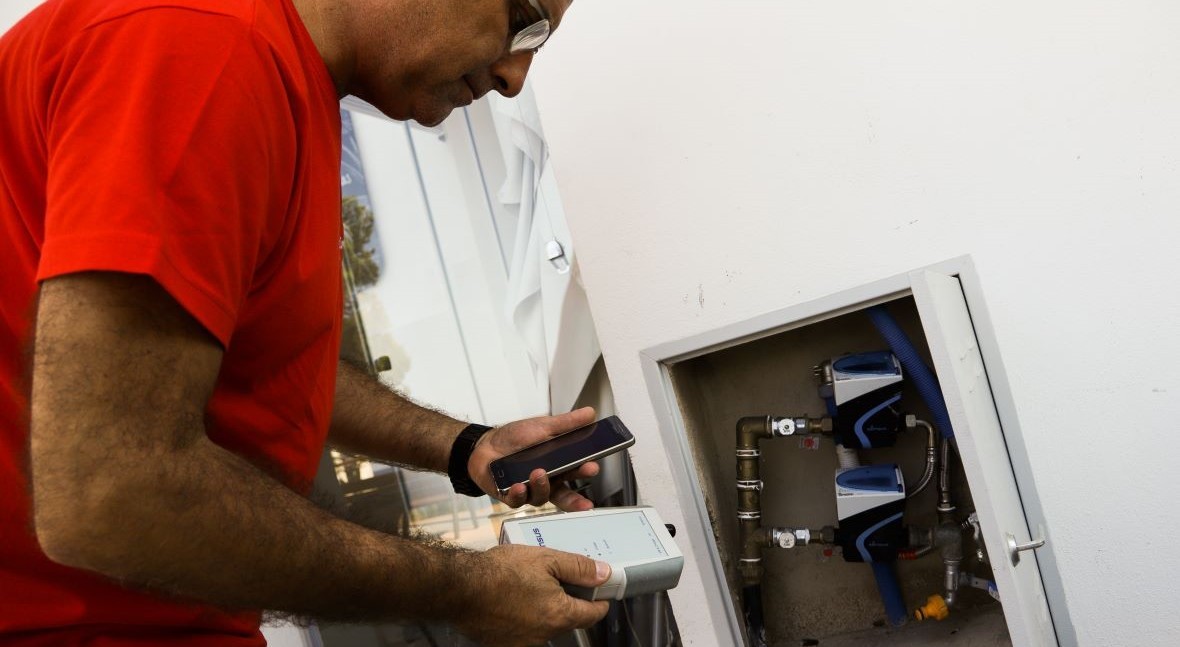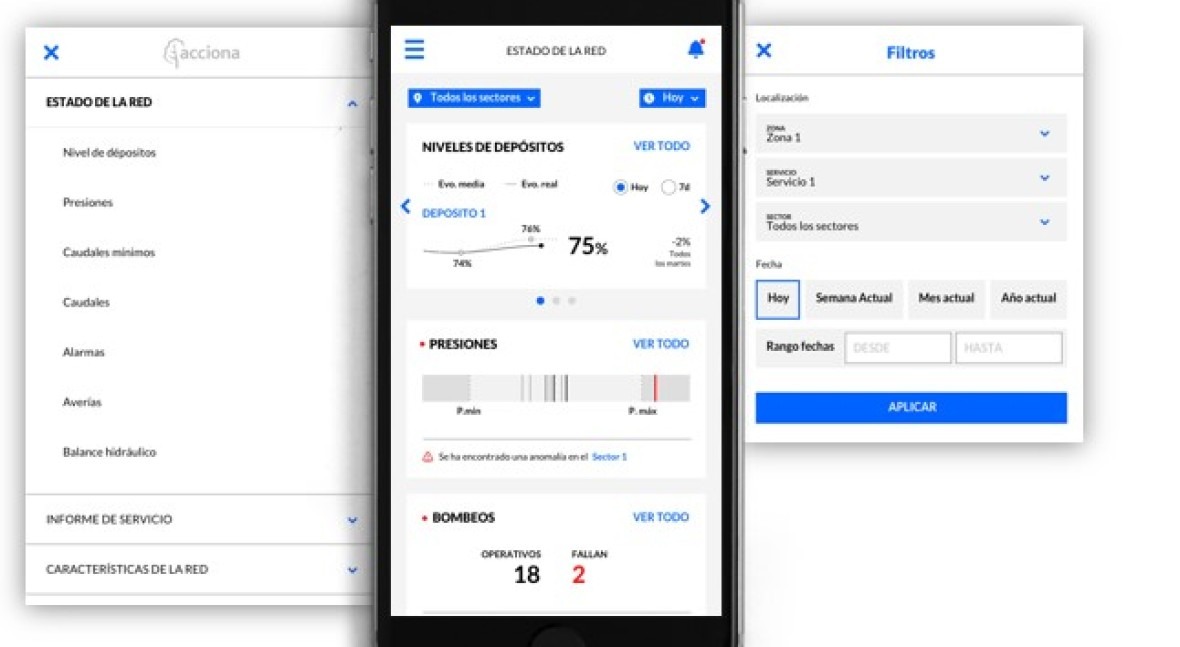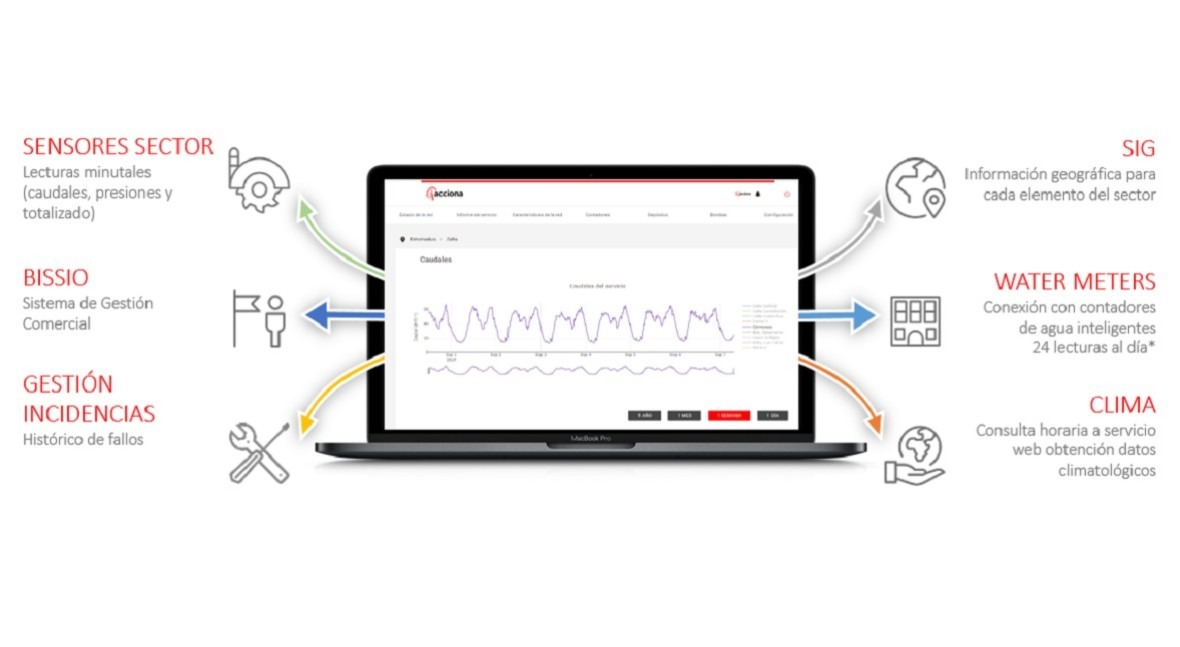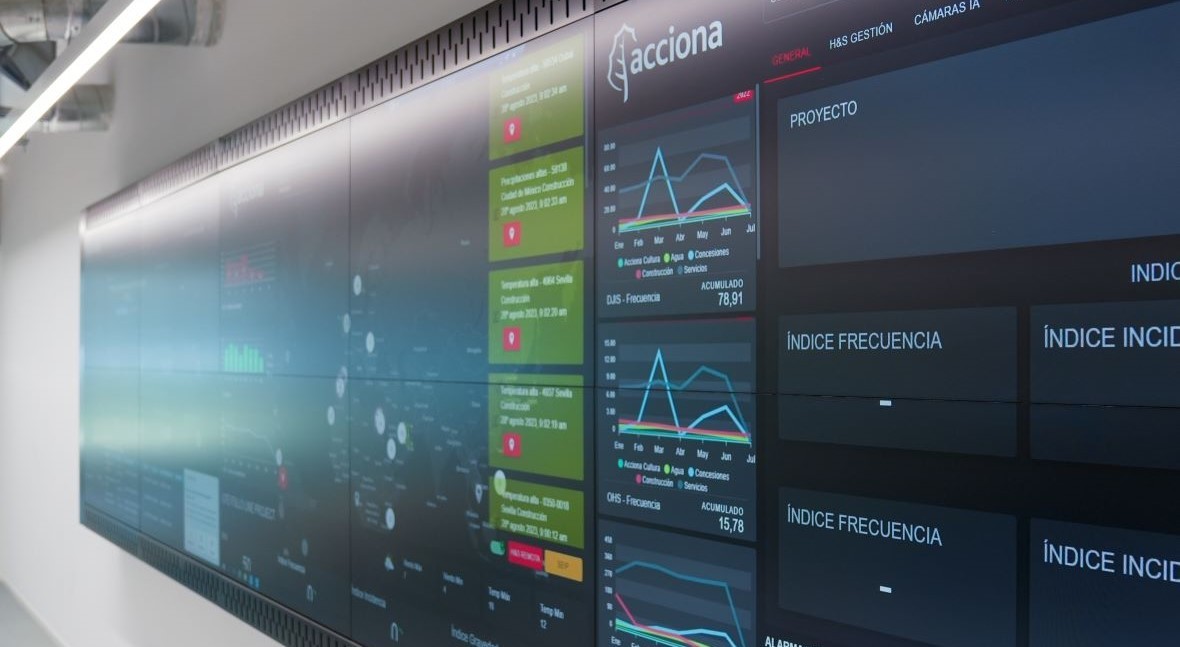New dimension in network asset management

The new paradigm of asset management in city water supply and sanitation networks has a strong digital component. The transformation of knowledge and thought has shifted from a purely human and rational realm to a digital dimension, fuelled by complex algorithms that optimize network operations and extend their useful life beyond the originally intended timelines.
The scarcity of resources and the lack of investment in water assets make it increasingly necessary to focus efforts on operation and maintenance from a predictive perspective, ensuring the highest benefits with minimal investments. This approach is encompassed in an asset management system for water supply and sanitation networks with a strong digital transformation component and is primarily focused on preventive and predictive maintenance.
1. Background
Everyone knows how we used to detect the need for asset renewal in our cities not too many years ago. The water engineer at the City Council, or a similar person in charge, would use their subjective knowledge to plan network renewals. They relied on their recent memory of incidents in a particular area to confidently determine that it indeed was the part of the network most in need of renovation or replacement.
Likewise, network maps were often "digitized" in the memory of the Water Service Foreman. Knowledge of where the network ran through various streets relied on querying this individual, sometimes with success, and other times less so.
The framework ACCIONA uses for an intelligent asset management system comprises four levels: data, information, knowledge and intelligence
This article does not intend to undervalue the work of those individuals. On the contrary, they used all their skills, knowledge, and understanding to manage the water supply and sanitation networks as best as possible with the available means. However, it aims to show how decision-making processes have evolved over time and how technology has been utilized in this area.
The purpose of this article is to demonstrate how digital transformation has led to a paradigm shift in integrated water cycle management. It seeks to transform a seemingly objective but subjectively influenced decision-making process into an empirical model focused on maximizing the productivity of available resources. This new model uses logical algorithms that consider numerous parameters, variables, and data, reflecting the real history of the asset.
2. The Frank pyramid
The Frank pyramid is the basic framework ACCIONA has used to develop an intelligent asset management system. The pyramid comprises four levels or stages necessary to develop systems (data, information, knowledge and intelligence), so that all processes are perfectly aligned, allowing us to achieve dynamic asset management.
Data
The foundation of the Frank pyramid is the database. Much has been said about big data in recent years. A big data system must be solid, robust, and resilient. As the pyramid's base, it supports all other system components. It must store information in an orderly, well-parameterized manner from various inputs. This big data system should be configured as a datalake, with ample storage capacity and open, bilateral communication with all the different inputs from the pyramid's next level.

Information
The information level of the pyramid consists of all systems that feed the datalake and serve as the basis for the next stage. These systems can be internal, such as GIS, work order management, automation and control systems, sensors, subscriber management programs, etc., or external digital information sources like population patterns, meteorological data, topographic data, soil data, etc. Both internal and external systems must be interconnected with the base of the pyramid, contributing data to the datalake as required.
Knowledge
Once we have information reception systems, selected and parameterized the information, and stored it in an organized manner, we can begin to truly "know" how our asset network operates. This knowledge allows us to make informed decisions, evaluate actions, and create control and monitoring documents for our assets and their performance. However, the new dimension in asset management is provided by the pyramid's apex.
Intelligence
The big data system is configured as a datalake, with ample storage capacity and open, bilateral communication with the different inputs
At ACCIONA, the intelligence added to our knowledge allows us to take dynamic asset management a step further. Dynamic management is continuously evolving and adapting to new challenges. The intelligence embedded in our asset management systems lets us identify real-time events in the network that deviate from expected "normal" behaviour, enabling immediate action. More importantly, it allows us to achieve a predictive maintenance model. Our systems' intelligence objectively identifies the best use of available economic resources for network renewal or replacement investments that maximize network productivity. In summary, it enables us to manage our resources and those of our clients as efficiently as possible, maximizing their performance.
3. Business Operations
Business Operations encompass all systems that provide information for the comprehensive management of assets, together with the asset storage system or datalake. This includes the first two levels of the Frank pyramid.
Geographic Information System (GIS)
One of the first digital tools implemented years ago in water and sewer systems was Geographic Information Systems (GIS). Initially, these systems offered very little functionality for the operation and maintenance of assets since their implementation was limited to digital maps in an expensive application accessible only to a service technician.
Our systems' intelligence objectively identifies the best use of available economic resources for network renewal or replacement
Today, GIS systems have evolved to be more functional and, importantly, to interact with other systems, providing geographic information on network assets for other complementary asset management systems. This is essentially the first step in asset digitalisation and arguably the most crucial step, as a good asset registry will lead to effective management. Our GIS services not only geolocate assets but also store dynamic attributes, meaning other systems, such as a work order manager, can record or modify attributes of an asset or associate specific incidents or maintenance activities with it. Advanced GIS systems also support visualization, enabling interaction, map printing, etc., from any device.
Work order management system
The next step within Business Operations is to have a work order planning and resolution manager associated with assets. This system allows for the creation of work orders both from an incident, resulting in corrective maintenance, and from an Asset Maintenance Plan, leading to scheduled preventive maintenance actions.
Business Operations encompass all systems that provide information for comprehensive asset management, together with the datalake
All work orders are created in the system, and categorized by activity type, location, asset type, etc. Each work order is linked to an asset. The categorization of this asset and its attributes travel from GIS to the work order management system, ensuring consistent parameters and attributes for the assets. Similarly, when work orders are resolved, the assets receive information on the action taken, which is recorded in their action history within GIS as an additional attribute.

The work order manager also provides valuable information about the tasks performed on the assets. It enables tracking the time spent on each activity, travel times, materials associated with each maintenance, and the costs of each repair or action taken on an asset. This information, organized and compiled, holds significant empirical value when we reach the intelligence phase, as it will inform the predictive maintenance models' calculations.
Asset automation, control, and sensor systems
Another critical point for obtaining operational data from our assets is the automation and control systems, as well as the sensors installed in our water supply and sewer networks. These systems not only enhance the operational efficiency of the assets, extend their lifespan, and reduce operational costs, but they are also a fundamental source of information. This data will be crucial when interacting with other systems that will add intelligence to the collected data in the future.
Datalake and external sources
To conclude the section on the purely operational management of assets, it is important to highlight the significance of data storage. Each system mentioned earlier operates independently, managing, storing, and configuring its own databases for its internal operations. However, for comprehensive asset management and to ensure that applied intelligence is useful, it is necessary to store specific data from each system in a common datalake that serves as the source for Business Intelligence. This parametrization allows for more effective system interrelationships. Only the necessary data between systems will travel to the datalake, while purely operational data remains in the systems where it was generated.
Information from the work order manager, organized and compiled, will inform the predictive maintenance models' calculations
The datalake not only stores data from operational asset management systems but also accesses and interconnects with third-party systems to capture and store information for future use by intelligence systems. Examples include data from the National Statistics Institute on population and housing numbers or rainfall data from the National Meteorological Agency, which can be used for subsequent mathematical modelling of the sewer network.
In summary, a common information repository is essential for transferring all relevant data from internal and external systems that could be used by intelligence platforms in asset management.
4. Business Intelligence
So far, we have seen how digital transformation in asset management has changed our interaction with assets. We have identified that asset maps and locations cannot be outside a geographic information system and how these systems have evolved to dynamically interact with other systems, forming the basis of digitalisation. Once assets are identified, named, located, and characterized, we manage them digitally through a work order manager. This tool provides a comprehensive characterization of the activities performed on the assets, their cost, intervention time, and the equipment, resources, and materials used.

We have collected the necessary data from each system and incorporated it into a bidirectionally interconnected database called datalake. Additionally, we have millions of external data points from various sources, most of them freely available, that can be used and incorporated into our systems. At this point, we develop what we know as Business Intelligence, which consists of applications or systems that, using the data stored in the datalake from asset operations, analyse, apply intelligence, and provide valuable results for predicting future actions on our assets. This represents a paradigm shift, moving from corrective and preventive maintenance to predictive maintenance, allowing us to anticipate future events and address them before they occur, thereby enhancing the security, productivity, and service level of the managed assets.
Real-time mathematical models (digital twin of the network)
Based on the GIS asset database and incorporating real-time data from sensors and automation and control systems, we have systems that analyse the network, create a mathematical model, and project a real-time digital twin of the network's operation.
The predictive intelligence platform provides reliable, objective information about the assets we manage and how to act on them.
The digital twin allows us to obtain network operation premises at any given moment, and anticipate or detect anomalies in the network almost in real-time. Examples include detecting leaks, uncontrolled discharges, high consumption, and water quality issues in the network by applying real-time data to traditional mathematical models.
Not only is the network modelling more efficient by adding data and sensors, but the calibration and adjustment of the digital model are also easier, more reliable, and accurately represent the hydraulic operation of the supply or sewer network.
Predictive and intelligent asset management platform
Finally, reaching the top of the Frank pyramid, ACCIONA has a predictive intelligence platform for analysing water supply and sewer networks. This predictive intelligence platform is powered by all the data incorporated into the datalake, from various operational units, GIS, automation and control, work orders, third-party data, real-time mathematical models, etc. By applying complex logical algorithms, it provides reliable, objective information about the assets we manage and how to act on them.

The system provides information on the behaviour of the supply and sewer networks, analysing the data and presenting events within them that require observation and study, as they may pose risks to the operation of those assets.
For example, in water supply networks, we can detect consumption events in sectors that are outside the normal range for a specific day or hour. This range is previously defined by the platform based on historical data analysis. Detecting an event means that something is not functioning as usual. This model predicts an incident that needs immediate attention. In this example, an unusual, unexpected consumption was detected in a network sector not optimized at that time. Asset managers anticipated problems and adjusted pumps and re-pumps in advance to address a potential supply shortage at a specific time.
In sewer networks, we use models to determine, for instance, cleaning plans in advance of blockages or retention in the sewers caused by sediment buildup.
We need to be more productive, optimize resources, and maximize investment to improve the service levels of the networks we operate
The asset management platform also provides information on the network's capacity to withstand the passage of time. The intelligent model can give us network investment parameters needed to maintain our service level and identify points or sections where renewal or replacement is required to maximize the infrastructure's lifespan.
5. Our goal
Why do we do this at ACCIONA? We all know how our cities grow every day and how the level of service demanded by society increases daily. However, our networks are ageing faster than we can replace them because we lack sufficient economic resources, and water tariffs do not adequately reflect technical amortization.
This situation requires us to be increasingly efficient, to extend the useful life of our assets, and to carefully manage our water supply and sewer networks as they are constantly subjected to material stress and fatigue. In short, we need to be more productive, optimize our resources, and maximize the investment available to improve the service levels of the networks we operate. We achieve all this through our dynamic asset management platform, which represents a new dimension in the management of these assets.


